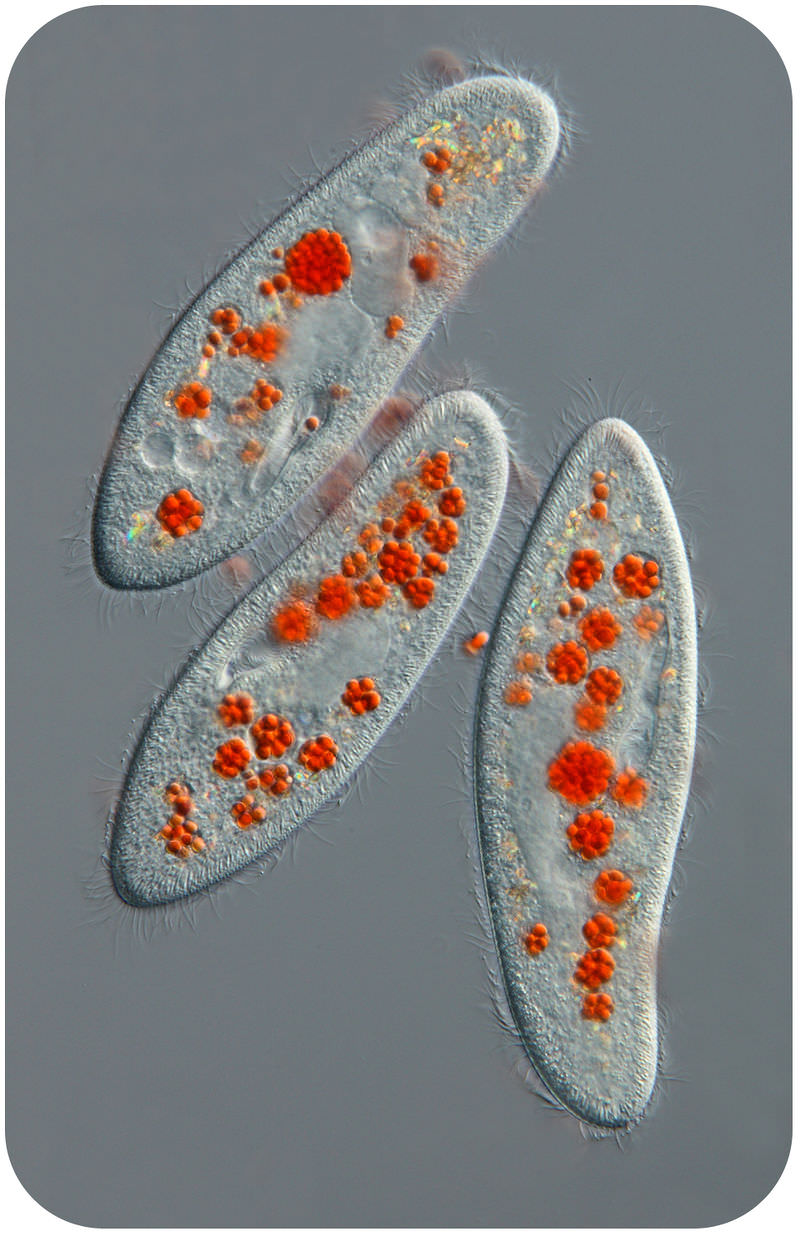6.3: Protozoa
- Page ID
- 2949

What can hunt prey and move, but is not an animal?
Some protists, like these Paramecium, act much like animals. Notice the tiny hair-like cilia that help them move. The food vacuoles, where they digest their prey, are colored in orange.
Animal-like Protists
Animal-like protists are called protozoa. Protozoa are single-celled eukaryotes that share some traits with animals. Like animals, they can move, and they are heterotrophs. That means they eat things outside of themselves instead of producing their own food. Animal-like protists are very small, measuring only about 0.01–0.5mm. Animal-like protists include the flagellates, ciliates, and the sporozoans.
Different Kinds of Animal-like Protists
There are many different types of animal-like protists. They are different because they move in different ways.
- Flagellates have long flagella, or tails. Flagella rotate in a propeller-like fashion, pushing the protist through its environment (Figure below). An example of a flagellate is Trypanosoma, which causes African sleeping sickness.
- Other protists have what are called transient pseudopodia, which are like temporary feet. The cell surface extends out to form feet-like structures that propel the cell forward. An example of a protist with pseudopodia is the amoeba.
- The ciliates are protists that move by using cilia. Cilia are thin, very small tail-like projections that extend outward from the cell body. Cilia beat back and forth, moving the protist along. Paramecium has cilia that propel it.
- The sporozoans are protists that produce spores, such as the toxoplasma. These protists do not move at all. The spores develop into new protists.

A video of the animal-like amoeba can be viewed at: http://commons.wikimedia.org/wiki/File:Amoeba_engulfing_diatom.ogg.
Summary
- Protozoa are single-celled eukaryotes that share some traits with animals.
- Protozoa can move by flagella, cilia, or pseudopodia, or they may not move at all.
Review
- What features describe the protozoa?
- What are three main types of protozoa?
- Distinguish flagellates from ciliates.

